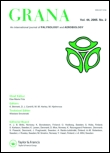
GRANA
Scope & Guideline
Advancing Knowledge in Ecological Dynamics and Plant Communities
Introduction
Aims and Scopes
- Palynological Research and Taxonomy:
The journal emphasizes the systematic study of pollen and spores to contribute to the taxonomy of various plant groups, providing insights into their morphological characteristics and evolutionary relationships. - Melissopalynology:
A significant area of focus is melissopalynology, which examines pollen found in honey, linking it to bee foraging behavior, honey quality, and the ecological implications of plant-pollinator interactions. - Pollen Analysis Techniques:
Research often explores advanced methodologies for pollen analysis, including innovative microscopy techniques and comparative studies of different analytical methods to improve accuracy and reliability. - Environmental and Ecological Studies:
The journal publishes studies investigating the ecological roles of pollen, including its seasonal variations, geographical distributions, and implications for climate change and environmental monitoring. - Palaeoecology and Historical Biogeography:
Another core area is the use of pollen data to reconstruct past vegetation and climate conditions, providing valuable insights into historical biogeographical changes.
Trending and Emerging
- Application of Advanced Microscopy Techniques:
There is a notable increase in the use of advanced microscopy techniques for pollen analysis, enhancing the detail and accuracy of morphological studies and contributing to the field's methodological advancements. - Impact of Climate Change on Pollen Dynamics:
Recent publications indicate a growing interest in understanding how climate change affects pollen production and dispersal, highlighting the ecological implications of these changes for plant and pollinator interactions. - Health and Allergy Studies:
Emerging themes include studies on pollen allergens and their impact on human health, particularly regarding respiratory allergies, indicating a bridging of palynology with public health research. - Integration of Pollen Databases:
The integration and enhancement of pollen databases for light microscopy and palynological research are trending, facilitating better data sharing and collaboration among researchers. - Focus on Regional Palynology:
An increasing trend towards region-specific palynological studies is evident, emphasizing localized ecological contexts and the unique contributions of various geographic areas to global palynological knowledge.
Declining or Waning
- Fossil Pollen Studies:
Research pertaining to fossil pollen and its geological contexts has decreased in frequency, suggesting a shift towards contemporary ecological studies and away from paleontological investigations. - Generalized Pollen Morphology Studies:
There appears to be a waning focus on broad surveys of pollen morphology that do not link to specific ecological or evolutionary contexts, as more targeted studies with clear implications for taxonomy and ecology are favored. - Urban Palynology:
While urban palynology has been a topic of interest, recent papers suggest a reduced emphasis on this area, possibly due to the greater focus on natural environments and their ecological dynamics.
Similar Journals
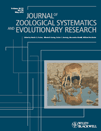
JOURNAL OF ZOOLOGICAL SYSTEMATICS AND EVOLUTIONARY RESEARCH
Exploring the Depths of Evolutionary InsightsThe Journal of Zoological Systematics and Evolutionary Research, published by Wiley-Hindawi, stands as a premier academic journal since its establishment, showcasing cutting-edge research in the fields of Animal Science, Zoology, and Ecology. With an impressive track record spanning from 1963 to the present, this journal has earned a Q1 classification in both Animal Science and Ecology, as well as recognized rankings in Genetics and Molecular Biology. Its impact is highlighted by its Scopus ranks, placing it in the top percentile for relevant categories, underscoring its vital role in advancing knowledge and understanding within these disciplines. Researchers, professionals, and students will find a wealth of high-quality, peer-reviewed articles that contribute to the evolutionary understanding of biodiversity and systematics. Though not an Open Access journal, it remains accessible to a wide audience committed to exploring the intricacies of zoology and evolutionary biology.

AEROBIOLOGIA
Connecting Science and Nature: The Study of Airborne ParticlesAEROBIOLOGIA is an esteemed journal published by SPRINGER, dedicated to the dynamic fields of Immunology, Allergy, and Plant Science. With a history of scholarly contributions dating back to 1985, this journal serves as a critical platform for researchers and professionals to share advancements and findings in the understanding of airborne biological particles and their implications on health and biodiversity. As evidenced by its Q2 and Q3 quartile rankings in various categories as of 2023, AEROBIOLOGIA holds a significant position within the academic community, particularly in the realms of Agricultural and Biological Sciences. The journal encourages high-quality submissions and remains committed to fostering innovation and collaboration among scientists dedicated to the exploration of aerobiological phenomena. While it is not an open-access publication, its rich repository of research is crucial for academia and industry practitioners alike, facilitating essential insights into ecological interactions and immunological responses.

FLORA
Innovating Research in Ecology and Plant StudiesFLORA is a distinguished journal published by Elsevier GmbH, focusing on the realms of Ecology, Plant Science, and Evolutionary Biology. Established in 1975, this journal has been a vital platform for researchers and professionals, disseminating groundbreaking findings and insights relevant to the plant sciences. With an impressive impact factor and a current Scopus ranking placing it in the second quartile (Q2) across multiple categories, FLORA is recognized as a critical resource for advancing knowledge in its respective fields. The journal publishes both traditional research articles and significant review papers, ensuring a broad spectrum of academic engagement. Although not open access, FLORA remains committed to enhancing the scientific discourse and fostering collaboration among scholars worldwide. Researchers seeking to enrich their understanding of ecological dynamics and plant biology will find FLORA to be an essential addition to their academic repertoire.

KOREAN JOURNAL OF PLANT TAXONOMY
Unveiling the diversity of flora through rigorous taxonomy.Korean Journal of Plant Taxonomy, published by the Korean Society of Plant Taxonomists, serves as a pivotal platform for researchers and professionals in the fields of plant taxonomy and ecology. With an ISSN of 1225-8318 and a burgeoning E-ISSN of 2466-1546, this journal aims to disseminate high-quality research that contributes to our understanding of plant species diversity, classification, and evolution. Spanning the years from 2018 to 2024, the journal finds its niche within Q3 rankings in both Ecology, Evolution, Behavior and Systematics and Plant Science, reflecting its impactful contributions and relevance in the academic community. The journal's scope encompasses various studies aimed at advancing plant taxonomy in South Korea and globally. By fostering collaboration and sharing groundbreaking research, the Korean Journal of Plant Taxonomy plays a crucial role in shaping the discourse in plant sciences, making it an invaluable resource for students, researchers, and professionals alike, committed to advancing knowledge in this dynamic field.
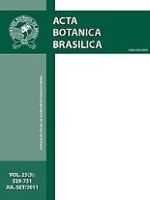
Acta Botanica Brasilica
Connecting Researchers to the Heart of Plant ScienceActa Botanica Brasilica is a prestigious open-access journal dedicated to the field of botany and plant science, published by SOC BOTANICA BRASIL. With an ISSN of 0102-3306 and E-ISSN of 1677-941X, it has been a vital resource for the academic community since its inception in 1987, fostering the dissemination of research and knowledge related to plant biology and ecology. Hailing from Brazil, the journal serves as a platform for researchers to share valuable insights on plant species, their habitats, and important ecological interactions. As of 2023, the journal holds a Q3 ranking in Plant Science and is recognized within the Scopus database, where it ranks #263 out of 516, placing it in the 49th percentile among its peers. This broad accessibility and commitment to quality research make Acta Botanica Brasilica an essential publication for botanists, ecologists, and other professionals in the life sciences, bridging gaps in knowledge and advancing the field with original articles, reviews, and comprehensive research findings.
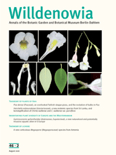
Willdenowia
Advancing botanical knowledge, one article at a time.Willdenowia is a prestigious scientific journal published by the Botanischer Garten & Botanische Museum Berlin-Dahlem, dedicated to advancing the field of botany and plant sciences. With an ISSN of 0511-9618, this journal has established itself as a crucial platform for researchers, practitioners, and students interested in ecology, evolution, behavior, systematics, and plant science. The journal boasts an impactful reputation, evidenced by its impressive Q1 and Q2 quartile rankings in Plant Science and Ecology, Evolution, Behavior and Systematics respectively, as well as notable Scopus rankings, placing it within the top quartiles of its categories. Although access is not open, articles published in Willdenowia contribute significantly to the global body of botanical research, making it an essential resource for anyone looking to deepen their understanding of plant biology and related ecological disciplines. The journal has continuously evolved since its inception and aims to facilitate interdisciplinary collaboration and knowledge dissemination in the life sciences.

BRITTONIA
Exploring the Richness of Botany and EcologyBRITTONIA, published by Springer, stands as a reputable journal dedicated to advancing the fields of botany and plant sciences. With a storied history dating back to 1931, this journal has evolved to embrace contemporary research spanning various aspects of plant biology, ecology, and systematics. Focusing on a comprehensive analysis of both ecological interactions and plant systematics, BRITTONIA plays a crucial role in disseminating knowledge among researchers and professionals committed to understanding plant life and its environmental contexts. Despite its open access status being currently unavailable, the journal ensures wide accessibility through institutional subscriptions. In the latest rankings, it proudly holds a Q2 category in Plant Science and a Q3 category in Ecology, Evolution, Behavior, and Systematics, indicating its growing influence and academic rigor. Researchers and students alike will find BRITTONIA an essential resource for the latest findings and discussions in plant sciences.

PLANT SYSTEMATICS AND EVOLUTION
Illuminating the Path of Plant EvolutionPlant Systematics and Evolution is a prestigious journal published by Springer Wien, dedicated to advancing research within the fields of plant taxonomy, evolution, and ecology. With its ISSN 0378-2697 and E-ISSN 1615-6110, this journal has been pivotal in shaping the scientific landscape since its inception in 1974. Based in Austria, it occupies a significant position in the academic community, being ranked in the Q2 quartile in both Ecology, Evolution, Behavior and Systematics and Plant Science as of 2023. This high-impact journal is recognized for its rigorous peer-review process and is indexed among the top publications in its category, holding a Scopus rank of #176 out of 516 in Plant Science and #252 out of 721 in Ecology, highlighting its relevance and quality in the research community. Although it does not currently offer open access, the journal is committed to making significant contributions to the understanding of plant biodiversity and evolutionary processes. This makes it an essential resource for researchers, professionals, and students aiming to know the latest developments in the study of plant systematics and evolution.

Alpine Botany
Innovating Research in Alpine Botanical Science.Alpine Botany is a premier scholarly journal published by SPRINGER BASEL AG, dedicated to the field of ecological and botanical research with a specific focus on alpine environments. With an ISSN of 1664-2201 and an E-ISSN of 1664-221X, this journal has established itself as a significant platform for disseminating high-quality research findings, with its latest category rankings placing it in the Q1 quartile for both Ecology, Evolution, Behavior and Systematics as well as Plant Science. Originating from Switzerland, Alpine Botany benefits from its geographical context, fostering a rich exchange of ideas and research advancements relevant to high-altitude flora. The journal operates under an Open Access model, promoting widespread accessibility of its content while accommodating an increasing demand for interdisciplinary studies within the ecological and botanical communities. With a commitment to excellence, Alpine Botany continues to serve as an invaluable resource for researchers, professionals, and students who are keen to explore and understand the complexities of alpine ecosystems.
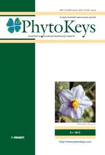
PhytoKeys
Innovating knowledge in plant taxonomy and conservation.PhytoKeys is a prominent open-access journal published by PENSOFT PUBLISHERS that has become a vital resource in the fields of Agricultural and Biological Sciences, Ecology, Evolution, Behavior and Systematics, and Plant Science. Since its inception in 2010, PhytoKeys has provided a platform for researchers and scholars to disseminate high-quality botanical research, making it increasingly relevant globally. The journal enjoys a commendable impact factor reflected in its 2023 ranking, positioning it in the Q2 quartile across multiple categories, including the 61st percentile in Agricultural and Biological Sciences (miscellaneous) and the 53rd percentile in Plant Science. With a dedicated editorial board and a mission to advance our understanding of plant diversity, taxonomy, and conservation, PhytoKeys supports the academic community by facilitating accessibility to cutting-edge research. Its commitment to open access ensures that valuable knowledge is readily available to researchers, professionals, and students worldwide, fostering collaboration and innovation in plant sciences.